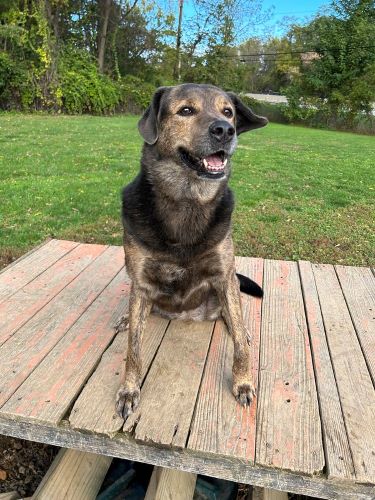Tips for Comfort and Mobility in Senior Dogs

As dogs age, they may develop mobility issues that impact their comfort and range of motion. A healthy diet and regular exercise can counteract the effects of aging, but even the best care can’t fully prevent joint pain, arthritis, and other mobility problems in older dogs.
The good news is that there are many steps you can take to help your dog adapt to its new reality. Giving your dog healthier and happier senior years can be as simple as implementing daily habits and promoting enrichment in various ways.
No matter the breed, size, or temperament of your dog, you’ll benefit from understanding common mobility limitations that come with age. This guide covers what you should know about senior dog mobility issues and includes advice for helping your dog thrive.
Are Senior Dog Mobility Issues Common?
Any dog can experience diminished mobility. However, certain breeds are more prone to mobility problems than others. For instance, Saint Bernards, German Shepherds, Golden Retrievers, and Rottweilers are known to develop conditions like hip dysplasia or arthritis. Dachshunds and corgis are predisposed to spinal issues because of their elongated physique.
Since these dog breeds are genetically predisposed to conditions that affect mobility, you’ll want to take extra care to monitor movements. Further, your veterinarian may recommend supplements from an early age to prevent premature mobility issues.
Senior Dog Mobility Issues: What to Watch For
In most cases, mobility issues emerge gradually as your dog ages. Mobility problems tend to surface between seven and twelve years of age, but the timeline may be affected by your dog’s health, diet, exercise levels, breed, and genetics.
In addition to consulting with your dog’s veterinarian, watch for these signs that may indicate your dog is experiencing mobility problems:
- Walking slower or limping: Elderly dogs may have to alter their pace or gait to prevent discomfort.
- Slipping during transitions: Your dog may falter when it tries to sit, stand, or move into a different position. This is particularly true in cases where your dog’s hips are in pain.
- Shifting weight: Your dog may frequently shift its weight from the front to the back (or vice versa) to get comfortable.
- Trouble with dynamic movements: Your dog may struggle to jump, climb, or run due to discomfort.
- Obvious signs of pain or weakness: Dogs may whimper, cry out, limp, or refuse to move if they’re especially distressed.
Conditions That Affect Mobility in Dogs
Many conditions can affect a dog’s range of mobility, oftentimes stemming from genetics or wear and tear from an active life. As a responsible pet owner, it is essential to stay informed about common conditions your pet can develop, and expose yourself to the standard course of action for treatment. Below is a breakdown of a few commonly experienced conditions that affect mobility in dogs.
Arthritis
Movement issues can crop up at any point as the result of an injury or accident. Senior dogs, however, will generally develop mobility problems because of an age-related condition, like arthritis.
Arthritis occurs when your dog’s joints become inflamed or start to degrade. Aging on its own does not cause arthritis. Instead, your dog may develop it due to old injuries flaring up, excessive weight gain, or a history of vigorous activity. They may also experience nutritional or biological changes that make it difficult for them to avoid the development of arthritis.
No matter the cause, arthritis can range from mild to debilitating. Your veterinarian cannot cure the condition, but they can reduce your dog’s discomfort with medications, supplements, physical therapy, or surgery.
Knee Injuries & Tears
Connective tissue tends to break down with age, so old dogs may face knee injuries or cruciate tears. These injuries can be mild or severe, and they may go hand-in-hand with other health concerns like obesity. Obese dogs are prone to knee injuries and ligament tears because the added weight strains its joints.
Knee injuries and cruciate tears can impact senior dogs regardless of their diet or fitness level, so you’ll want to watch your pet closely for signs of knee pain or inflammation.
Hip Dysplasia
Large breeds, including German Shepherds or Golden Retrievers, may develop hip dysplasia — a painful condition that affects the hip joints. Signs of dysplasia can appear at a young age, but the condition tends to accelerate in senior dogs.
Veterinarians can treat hip dysplasia with medications, supplements, hip braces, or even surgery. The treatments will vary depending on the severity of your dog’s condition.
Diseases
Lastly, your senior dog may face mobility issues because of disease. Degenerative Myelopathy, or DM, is a progressive spinal disease that causes weakness in your dog’s back legs and a loss of coordination. The symptoms worsen over time, and eventually, dogs with DM become paralyzed. Since DM is a genetic disease, reputable breeders will watch for specific genetic markers so that they don’t breed dogs that are predisposed to it.
Intervertebral Disc Disease (IVDD)
Your vet may give a diagnosis of IVDD if your dog has a slipped, herniated, or ruptured disc in its spine. Often, this condition starts after an injury. Your dog will likely show signs of pain or distress if they’ve injured their back in this way.
IVDD can happen at any age, but it’s common in older dogs since their muscles, bones, and joints are already in a state of decline. Dachshunds and Corgis are especially prone to IVDD. If your dog develops this condition, they’ll need to wear a brace to stabilize the spine and back muscles.
Malformations
Bone, muscle, or joint malformations can lead to mobility problems, as well. If your dog has a birth defect that impacts its mobility, the effects may worsen with age as the body naturally deteriorates. You’ll want to work closely with your veterinarian to prepare for your dog’s future needs.
How to Keep Your Senior Dog Comfortable
Dogs are resilient animals, and with a bit of help, they can live robust, happy lives – even with mobility limitations. That said, diminished mobility can have a significant impact on your pet’s quality of life, especially if they’re young-at-heart and have lived an active lifestyle.
In tandem with advice from your veterinarian, you can take the following steps to help your dog feel comfortable and happy:
- Improve traction: Homes are filled with slippery surfaces. As your dog ages, it may struggle to gain purchase on tile, wood, vinyl, and other slick surfaces. You can help your dog by placing rugs in high-traffic areas.
- Encourage gentle play: Young-at-heart dogs may want to run, jump, and roughhouse. Sadly, these activities are dangerous for senior dogs with mobility issues, so you’ll want to discourage them when possible. As an alternative, take your dog out for slow walks and try to maintain a relaxed pace during play.
- Take care of your dog’s paws: Good paw care practices can go a long way toward keeping your senior dog active. Remember to regularly trim your dog’s toenails. Generally, you can trim them every 3-4 weeks without issues, but you may need to trim them more frequently if they’re overgrown. With short nails, your dog is less likely to skid around on smooth surfaces.
- Use assistive devices: If your dog still needs more traction, consider getting paw pads or anti-skid booties. These devices stick to your dog’s paws or surround their feet and provide a grippy surface. It may take some time for your dog to get comfortable with these devices, but they’ll move more easily in the long run if they adjust to using them now.
- Build or buy a ramp: As dogs age, it’s common for them to struggle with jumping on couches or getting into cars. Further, you’ll want to prevent these dynamic movements to prevent injuries. Help your dog by building or purchasing a simple ramp from wood or metal that you can connect to a couch or vehicle. You can also create a series of ramps in your home to help your senior dog navigate the stairs. Using a ramp removes the need for jumping, which helps preserve your dog’s joints and muscles.
- Use a stroller or carrier: If your senior dog gets to the point where walking is no longer a comfortable option, you can still enjoy your favorite activities together. However, you’ll want to use a dog stroller or carrier to limit their movements and keep them comfortable. These devices come in many shapes and sizes for most types of dogs.
- Ensure proper nutrition and hydration: Nutrition plays a large role in your dog’s ability to maintain healthy joints and other tissues. Ensure that their diet provides all essential nutrients, and ask your vet about supplements or special formulas they can try. In addition, you want to ensure that your dog is staying hydrated, whether from the water bowl or from the moisture they get in their food and supplements.
What Greenlin Can Do For You
If you have a senior dog, we understand that it can be intimidating to leave them at a boarding facility. At Greenlin Pet Resorts, we have an excellent reputation for providing top-notch care to dogs of all ages and backgrounds. We offer state-of-the-art boarding facilities at six convenient locations in Central PA. Our resorts are clean, secure, spacious, and designed with your dog’s comfort in mind.
Further, we offer dog daycare for short-term needs, dog training, and dog bathing services. Our highly-trained staff knows how to safely and thoughtfully work with elderly dogs to ensure their comfort and peace.
Harrisburg Magazine has voted Greenlin Pet Resorts as “Simply the Best” for more than ten years in a row. Tour one of our six Harrisburg area locations today to see what Greenlin has to offer.
